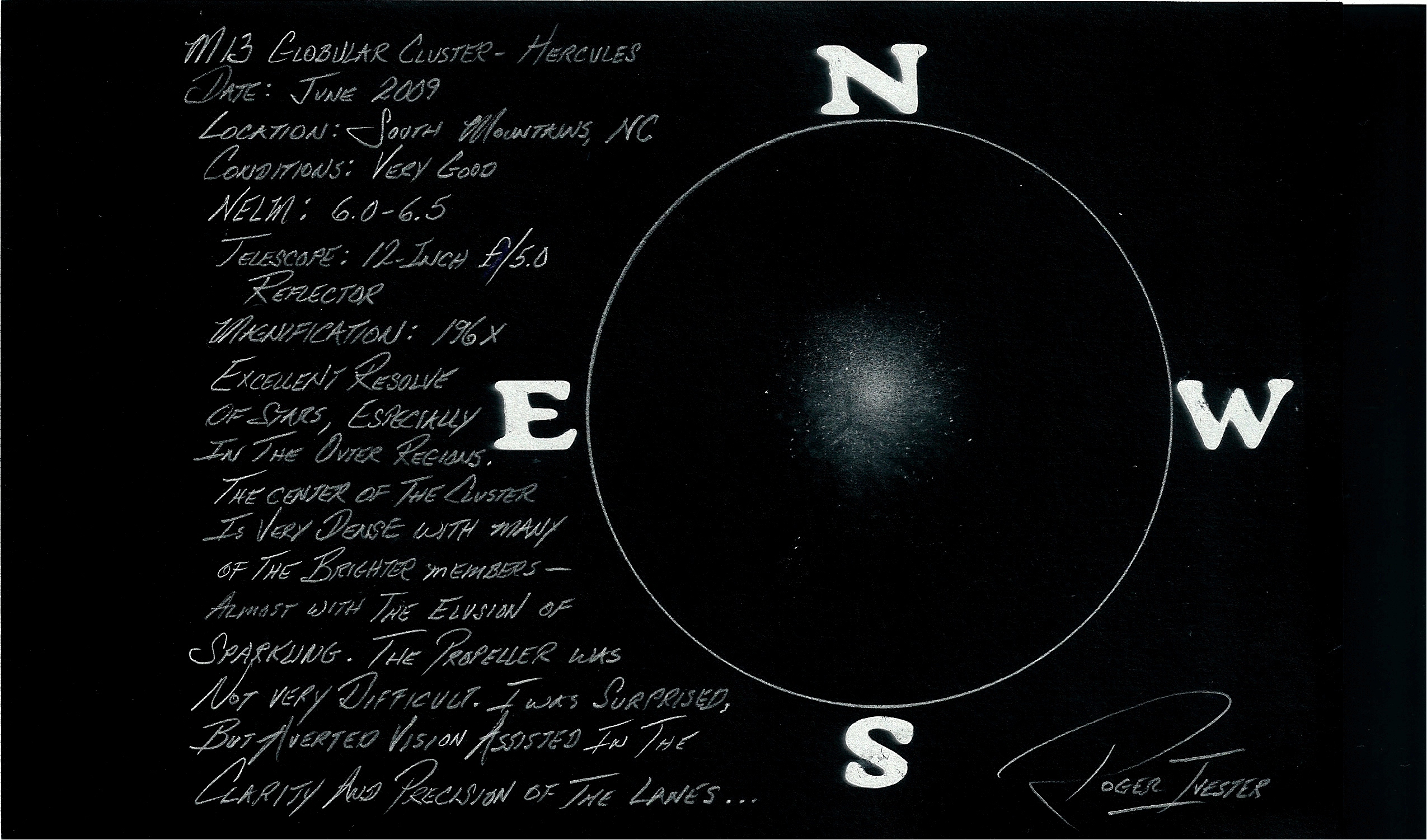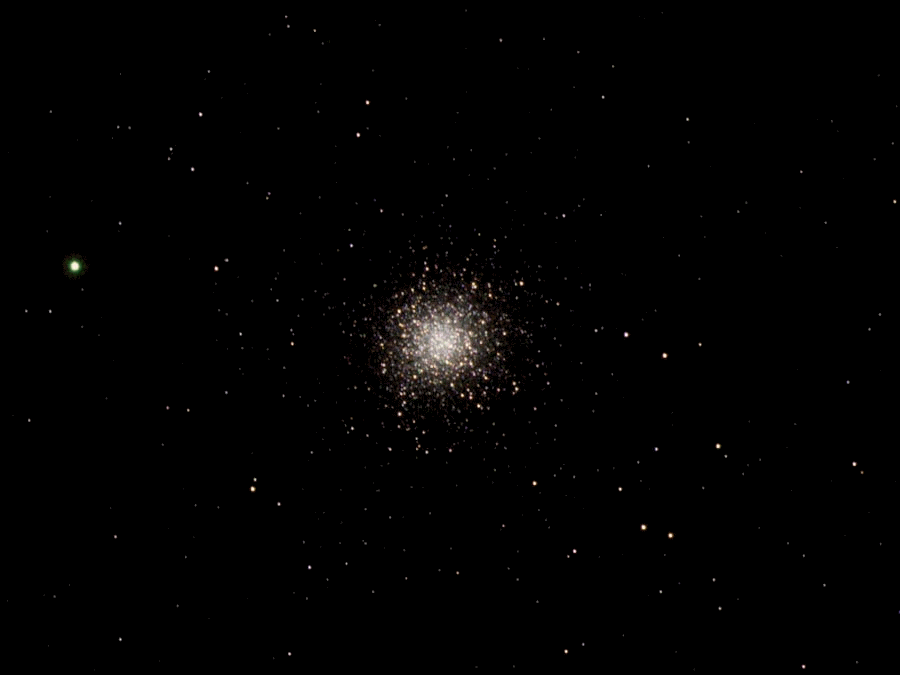
By: Roger Ivester
During the summer, the great globular cluster, M13 is located high overhead for observers in the northern hemisphere, allowing for excellent viewing. Observing this cluster back in 1977 with my 4 1/4-inch f/10 reflector, the most I could see was a moderately bright ball of unresolved stars.
While observing M13 with that small reflector, I was unaware of the three dark lanes cutting into the SE edge of the cluster, called the propeller. I'd never heard of the propeller at that time, and this scope was far too small to see this very faint feature. However, thirty-two years later, in May of 2009 using a much larger telescope, I saw it.
A 10-inch telescope might be considered the minimum aperture required to see this most unique shape. If you have plans to observe the "elusive propeller," a magnification of around 200X seems to be the optimum magnification.
The propeller challenge became popular due to Walter Scott Houston, columnist and writer of Deep-Sky Wonders, which ran in Sky & Telescope magazine every month from 1946 - 1994. Houston first wrote about the dark lanes in the July, 1953 edition of Sky & Telescope magazine. And although he brought it up several more times through the years, it has only been in recent times that the propeller has gained much attention in the amateur astronomy community.
Lord Rosse mentioned three dark rifts in the 1850's, and T.W. Webb in Celestial Objects for Common Telescopes noted that the lanes were seen by Buffham, using a 9-inch reflector.
John Bortle saw the lanes in 1980 using a 12.5-inch Newtonian reflector at 176x. During the Stellafane convention in 1981, Dennis di Cicco was surprised by how easily the lanes were seen with the 12-inch f/17 Porter turret telescope at about 180x. Both Bortle and di Cicco commented on the importance of magnification. (Source: Deep-Sky Wonders by Walter Scott Houston, selections and commentary by Stephan James O'Meara. Sky Publishing Corporation, Cambridge Massachusetts).
In May of 2009, I was able to observe the propeller with both a 10 and 12-inch reflector. My observation of the cluster with the 12-inch came from the southern rim of the South Mountains in North Carolina. I would rate this site as very good with a NELM of 6.5, and maybe even better on an excellent night.
The propeller was fairly easy to see with the 12-inch f/5 reflector from a dark site. Seeing it, however, proved very difficult using a 10-inch f/4.5 reflector from my moderately light polluted backyard with a Naked Eye Limiting Magnitude (NELM) of about 5.0 or slightly less.
Fred Rayworth and Ryan Rogers of Las Vegas were able to see it fairly easily, using a 16-inch reflector with a magnification 203X. Steve Davis of North Carolina reported seeing the lanes very easily using a 12-inch Newtonian reflector, with a magnification of about 200x.
The following sketch was made using a 12-inch f/5 reflector at 190X from the southern rim of the South Mountains, in Western North Carolina. The sketch was made with a No. 2 pencil and a blank 5 X 8 note card. The colors were inverted using a scanner.

12-inch f/5 reflector at 190X from the southern rim of the South Mountains, in Western North Carolina.
The following image was taken by Dr. James Dire of Hawaii, using a 190 mm Maksutov-Newtonian.

Image by: Dr. James Dire
Were you able to see M13 and the elusive propeller? Tell us about it in the comments!
Roger Ivester has enjoyed the wonders of the night sky since he was 12 years old. He is a visual observer and enjoys sketching and writing about what he sees. In 2009 he helped start the Las Vegas Astronomical Society Observers Challenge, and works with Fred Rayworth on a monthly basis to compile the report. Roger and his wife Debbie live in the foothills of western North Carolina.















